How Does No Fault Insurance Work in Ontario?
Ontario’s modified no-fault insurance system is often misunderstood. For individuals involved in a car accident, understanding how this system works means being able to position yourself to receive the full extent of the benefits you need to recover physically, emotionally, and financially.
In this blog, we answer the question of how the modified “no-fault” car insurance works in Ontario, as well as detail the common obstacles individuals face when making claims and how they can be overcome with effective legal support.
Ontario No-Fault Insurance: What is it?
Contrary to what the term might suggest, no-fault insurance does not mean that nobody is deemed at fault in a car accident. Rather, it refers to a system where, in the event of a collision, each driver interacts directly with their own insurance company to settle car damage claims, irrespective of who caused the accident. It also means that all drivers and passengers will have access to basic Accident Benefits that are available through the standard auto insurance policy in Ontario regardless of who is at fault for the accident.
This system is governed by Ontario’s Insurance Act, which includes the Fault Determination Rules. By simplifying the claims process, it is supposed to expedite the settlement of vehicle damage claims and provide access to basic medical coverage and treatmen for insured drivers and passengers.
Fault Determination Rules: Assigning Responsibility
Despite its name, fault is still a key component in Ontario’s no-fault system. The Fault Determination Rules under the Insurance Act guide how responsibility is assigned in car accidents. These rules provide a detailed framework for insurance companies to assign fault consistently and fairly in various accident scenarios. They cover a wide range of situations, from rear-end collisions to accidents at intersections, and stipulate the percentage of fault to be assigned to each driver involved.
For example, a driver who rear-ends another vehicle is typically found predominantly at fault, as drivers are expected to maintain a safe distance from the vehicle ahead. In intersection accidents, fault may depend on factors like traffic signals, right of way, and the actions of each driver at the time of the collision.
The assigned fault percentage may influence insurance claims and insurance premiums. An at-fault driver may face increased premiums and be responsible for their deductible, while a driver found not at fault can claim damages without such penalties.
Accident Benefits and Direct Compensation Property Damage (DCPD)
Under Ontario’s modified no-fault insurance, accident benefits include coverage for:
- Medical and Rehabilitation Costs: These benefits cover expenses for medical treatment, physical therapy, and other rehabilitation services necessary due to injuries sustained in a car accident.
- Income Replacement: This benefit provides financial assistance to individuals who are unable to work due to the injuries suffered in the accident, ensuring a portion of their lost income is compensated.
- Attendant Care: This benefit is designed to cover the cost of a caregiver or personal attendant for individuals who require assistance with daily living activities due to their injuries from the accident.
These benefits are accessible regardless of who caused the accident.
Another aspect of no-fault insurance is Direct Compensation Property Damage (DCPD), which is designed to cover property damage to your vehicle in the event of an accident. Here’s how it works:
- Coverage Scope: DCPD applies when you are involved in an accident with another vehicle, and you are not entirely at fault. It covers the cost of repairs to your car or its cash value if it’s totaled, as well as the loss of personal items inside the vehicle.
- Determination of Fault: The amount you’re compensated through DCPD is based on the percentage of fault assigned to you in the accident, as determined by the Fault Determination Rules. For instance, if you’re deemed 30% at fault, your insurer will cover 70% of your damage costs.
- Deductibles and Limits: The claim is subject to your policy’s deductibles and limits. If you’re partially at fault, you might have to pay a portion of the deductible.
- Exceptions: DCPD doesn’t cover everything. For example, if you’re entirely at fault, DCPD won’t apply, and you’ll need collision coverage to pay for your car’s repairs.
Together, these forms of repayment help those involved recover from their accident.
The Role of Insurance Companies in No-Fault Insurance
After an accident, regardless of fault, your insurer is responsible for handling your claims. This includes assessing the damage to your vehicle, coordinating any necessary medical assessments or treatments, and providing compensation for repairs and medical expenses as outlined in your policy.
The insurance company’s responsibilities extend beyond mere financial settlements; they are also supposed to offer guidance and support throughout the claims process. However, as profit-seeking businesses they are at times responsible for some of the difficulties claimants face during the process.
Claiming Benefits Under No-Fault Insurance and the Value of Legal Support

Despite the simplicity no-fault insurance is intended to promote, the claims process often presents various challenges, however, they can be overcome with the help of a lawyer.
One common issue is the difficulty in understanding insurance policies, including your exact coverage limits and what you are entitled to claim. A legal professional can demystify the terms and conditions of your insurance policy and make sure you claim the benefits you are due.
Another challenge is disagreements with insurance companies over the assessment of fault or the extent of damages and injuries. These disputes can arise from different interpretations of the Fault Determination Rules or discrepancies in the evaluation of the accident’s impact.
Such conflicts can significantly delay the claims process and might result in inadequate compensation for the insured. In such cases, a lawyer can negotiate with the insurance company on your behalf and fight for the benefits you are owed. If disputes escalate, your lawyer will represent you in court and fight for your benefits.
Overall, working with a lawyer gives you the best chance at securing the benefits you are entitled to. Lawyers make sure your damages are properly assessed, that you understand your car insurance policy, that your claim is submitted correctly, and that your rights and interests are protected throughout the process.
McNally Gervan – Helping You Recover From Your Accident
No-fault insurance is designed to streamline the way individuals involved in car accidents secure the benefits they are entitled to. And while it is called ‘no-fault insurance’ the process does require that insurance companies assign a degree of fault to the drivers involved. These interpretations, among other things, create room for error and unfairness in the process, which is why it is important to work with a lawyer when making a claim in your personal injury case.
At McNally Gervan, we have a proven track record of helping our clients achieve favourable outcomes with their personal injury and insurance matters. So if you’re dealing with a car accident claim, a life insurance claim or a long-term disability claim, contact McNally Gervan for a free consultation. Our team is ready to support you.






Follow Us